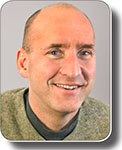Cryogenic ultrasonic flow measurement—an enabling technology for LNG production, storage and transportation
Gregor Brown A , Don Augenstein A , Herbert Estrada A and Terry Cousins ACaldon Ultrasonics, Cameron Measurement Systems
The APPEA Journal 49(1) 1-12 https://doi.org/10.1071/AJ08001
Published: 2009
Abstract
Liquefied natural gas (LNG) is becoming an increasingly important energy commodity with the declines in conventional oil reserves. The economics of LNG depend on the use of cost effective production, storage and transportation systems, which can involve use of shared facilities. For example, shared storage and berthing facilities can result in massive cost savings for LNG producers.
The potential cost savings associated with shared storage or transportation of LNG can only be realised if each partner can be assured that they are getting their fair share of the final revenue, i.e. reliable systems for production allocation and custody transfer are required. Previously, tank level based volumetric measurement has been the standard in LNG measurement; however, such systems are dependent on the very infrastructure that can be eliminated in shared transportation and storage systems. What is needed for shared facilities is a reliable method of in-line LNG metering.
Up until recently, in-line metering of LNG had not been used for allocation or custody transfer owing to a lack of qualified technologies capable of accurate measurement. The two major challenges are to produce a metering technology capable of reliable operation at cryogenic temperatures and to devise a traceable calibration method appropriate for the conditions of operation.
This paper describes the development of reliable ultrasonic meters designed for high accuracy measurement of LNG and addresses the issues that could arise as a result of the differences between calibration and field conditions. Data is presented demonstrating the performance and robustness of transducers specially designed for cryogenic operation. Details are provided of a method for transferring laboratory calibration using water to LNG application conditions with minimal uncertainty.
The paper includes a case study related to the use of these meters for allocation into shared storage at the Qatar Gas common facilities project. Prior to selection of the meters for this application the project partners undertook an evaluation of the ultrasonic technology at the Kenai LNG plant in Alaska alongside Coriolis flow metering technology. The aims of this field qualification testing are described and results presented.

Gregor Brown graduated from Glasgow Caledonian University with a BSc (Hons) in instrumentation with applied physics in 1993, where he then worked for a further two years as a postgraduate researcher. He was then employed by the National Engineering Laboratory (now TUV NEL Ltd) as a research and development engineer, working on a wide range of flow measurement projects. His career at NEL spanned 10 years, latterly as business manager for the oil, gas and chemicals division. In 2004, he was awarded a PhD by Glasgow Caledonian University for a thesis on ultrasonic flow measurement. In 2005 he joined Caldon Ultrasonics as their research director. His work at Caldon has been focussed on understanding and improving the performance of ultrasonic flowmeters, particularly for liquid hydrocarbon applications. gregor.brown@c-a-m.com |

Don Augenstein graduated with distinction from Cornell University with a BSc and then Masters degree in electrical engineering (1984 and 1985). His early professional career involved the design and manufacture of satellites while working with Hughes Aircraft. He then worked at the University of Maryland as a Naval Research Laboratory fellow gaining a Masters in systems engineering and control theory for a thesis on flexural vibration in satellites. In 1991 he joined MPR Associates, where his work included the management of the installation of ultrasonic flowmeters for the measurement of feedwater flow at nuclear power plants. In 1993 he joined Caldon Ultrasonics and became their director of engineering and has played a key role in the development of Caldon flowmeters for the nuclear industry as well as for the hydroelectric and petroleum industries. don.augenstein@c-a-m.com |

Herbert Estrada graduated with distinction from the University of Pennsylvania in 1951, as a BSc in electrical engineering. His early career was spent in the analysis and design of fluid and control systems in the US Navy’s nuclear submarine program. He was chief test engineer for this program at Portsmouth (NH) Naval Shipyard. In 1965 he joined MPR Associates, a consulting engineering firm where his work included the management of the installation of chordal transit time ultrasonic flowmeters for the measurement of reactor coolant flow in Unit 2 of the Prairie Island Nuclear Power Plant. He has been chief engineer at Caldon Ultrasonics since 1994. herbestrada@comcast.net |

Terry Cousins has a degree in aeronautical engineering from City University, London. Following graduation he was employed on a one year contract designing a wind tunnel at the National Physical Laboratory. He then joined Kent Instruments (now ABB) where he worked for seven years on the design and performance of a wide range of flow meters. For the next 14 years he worked at Bestobell (KDG) and Sarasota developing ultrasonic meters, turbines meters, flow computers, densitometers and thermal mass flowmeters and holding various positions including technical director and engineering director. He then worked for 12 years as a consultant carrying out measurement audits and problem solving in applications ranging from waste water to oil custody transfer. He joined Caldon Ultrasonics as petroleum applications manager in 2003. terry.cousins@c-a-m.com |


